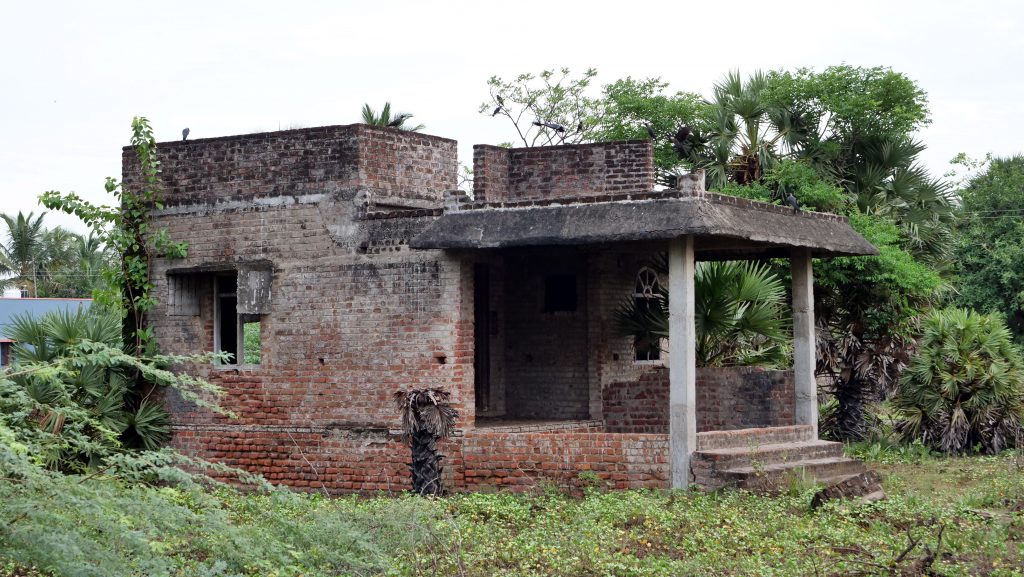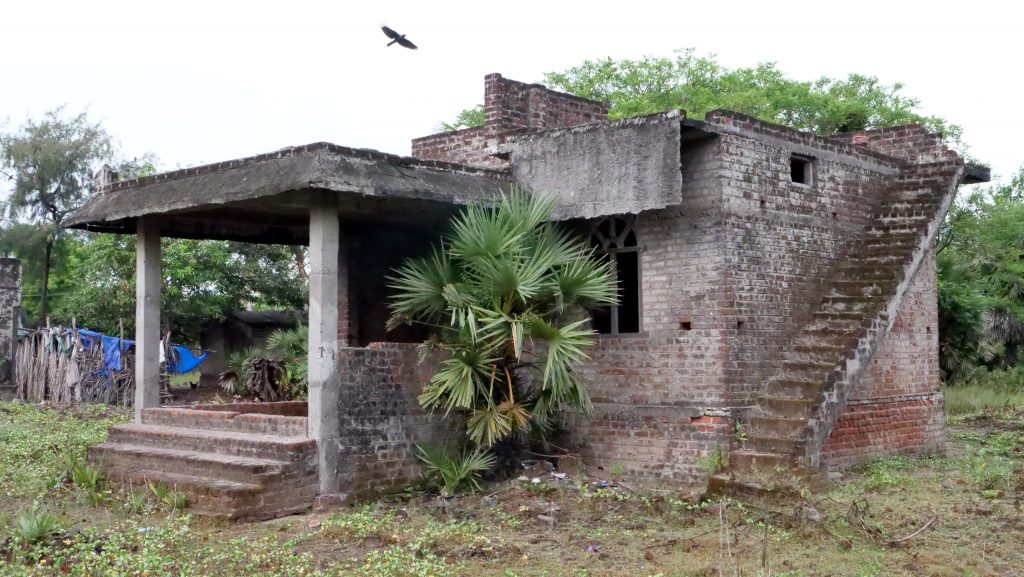Archiving disaster memories, rehabilitation ruins and Industrial projects


“We have been relocated here after the Tsunami havoc. The village had three one storeyed houses, ten brick houses and the rest were all thatched roof houses. Our village lost more than sixty people, most of the casualties being women and children. The government provided five cents of land for each household, totally accounting for 25 acres for 160 households. The village we deserted after the Tsunami havoc now it remains a ghost village. Government persuaded us to sell those lands to them. Before the Tsunami our village folks used to park their boats in the seashore with ease and venture into the sea”.
Lakshmanan, MGR Thittu, aged eighty, father of two and five grandchildren


“ The power plant too contributed to our woes. They cleverly made our fishermen park their boats in the creek from the existing boat landing areas on the shore. Now the desalination plant is being operated near the shore to cater to the power plant needs. I have personally warned our men to not park the boats near the creek as they are alienating us from our cultural spaces….spaces where the fishermen dry the fish and all the important Masi magam takes place. The festival has lost its colour and value. One day they will make us desert this village and the government too will support them. When there was a six month protest against the fly ash pollution by the power plant, the government machinery stood behind them. The men were threatened by the police with fake complaints from the power plant owners”.
Kalavathy


Both Kalavathy and Lakshmanan represent voices of discontent and suffering against the disaster management programs which has pushed them to survive in vulnerable settings. Our first story maps the impact of Post Tsunami rehabilitation projects and thermal power plants on the fishing communities who lived in coastal villages along the Cuddalore Coast. By recording the myriad ways ordinary men and women responded to the crisis and the multiple and often contestatory frameworks employed by them to understand the impact of state led rehabilitation projects, the disaster memories project is an attempt to write against bureaucratic and reductive definitions of calamitous events and recover voices that have otherwise been silenced by state and institutional discourses. We focus on how and what people remember of the disaster and their perception of the social and physical infrastructures put in place to build back and resettle the populations. In looking at the contradictory impact of the different infrastructural and rehabilitation projects on the coastal economies, we focus on RUINS and the transformation of these spaces into zones of large scale land acquisition, toxic wastes, abandoned projects and debris which have pushed coastal communities into a spiralling cycle of indebtedness and marginalisation.
联系我们
邮箱:shanghai.cga@nyu.edu
电话:+86 (21) 20595043
微信公众号:NYUShanghaiCGA
地址:
上海市浦东新区杨思西路567号
W822室

© 2024 All Rights Reserved


